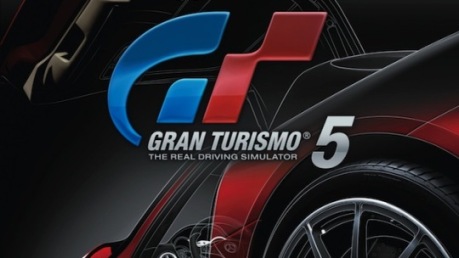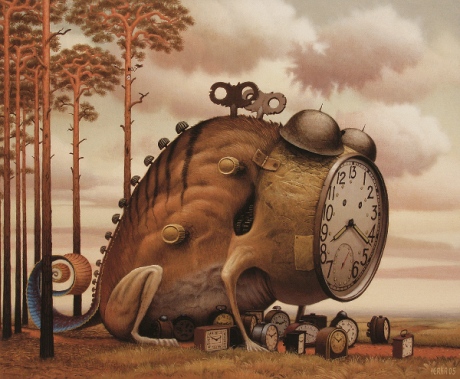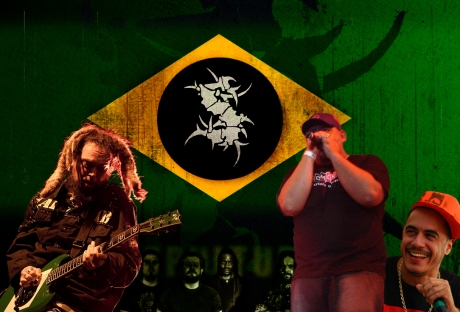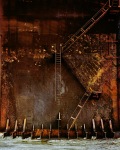From books to games, anyone? February 25, 2011
Posted by Cesar in gaming me, thinking me.Tags: games, Hitchhiker's Guide to the Galaxy, lord-of-rings, postaweek2011
9 comments

The other day I was thinking about this: what electronic games came straight from books? It doesn’t count if the game is just vaguely inspired by a book setting, like the Rainbow Six series, or if the game is based in a movie which is based in a book (anyone thinking Lord of the Rings?). Ah! And comic books / graphics novels don’t count either.
Mind you, I never googled for results either (although I did research the games I found). So instead I posed the question to many of my friends, including several game designers, and I was surprised to find out that the answers never come easy. It is hard to list games that fit the criteria. Many of the mentioned ones are old school games, like the text-based Hitchhiker’s Guide to the Galaxy and The Hobbit. Modern games are much harder to find. It seems like books now get movie versions before the games industry takes a stab at it. However, it is still possible to find some, like the successful The Witcher.
Pinpointing the reason for this small number of direct translations from books to games is very hard. It seems like it was easier 20 years ago, but that might just be because the games were so much simpler: a single programmer fan could be enough to spawn a text adventure back then. But even that is not obvious, the numbers I got in my survey are too small for any conclusive analysis.
Below are the titles I got, I still can’t believe I found so few. If you remember any more, disagree with one or if you simply have a theory on the subject, let me know in the comments!
- Alice
- Wonderland
- Hitchhiker’s Guide to the Galaxy
- Dante’s Inferno
- Discworld
- The Colour of Magic
- The Hobbit
- The War of the Worlds
- The Witcher
See you space cowboys…
Pursuit of innovation February 1, 2011
Posted by Cesar in thinking me, working me.Tags: ICO, Innovation, postaweek2011, Shadow of the Colossus, Video game industry
2 comments

As usual Mathew Sakey had an interesting column last month . He writes about innovation in games and analyzes the concept of innovation itself, making a split between the conservative innovation we tend to see in most AAA games and the wild innovation we so rarely have a chance to appreciate.
The idea made me look at the industry as a whole and try to place the development team in that system. Although passion-driven, the games industry is still an industry, and as such it has a very strong financial component we cannot ignore.
It is true that developers now have way more efficient means to reach the market without a publisher, a development studio or even a team. Indie developers can publish games on Steam, Apple Store, XBox Live Arcade and others, all very valid options to share game experiences with the world.
But in the end, the vast majority of the content players will enjoy comes from professional developers plugged into the games industry production chain, which includes development studios, first party publishers, third-party publishers… you know the drill.
So when we look at innovation in indie games, it is fair to expect anything. There are no strong strings tying indie developers to market fluctuation, advertising, sales, development time. On the other hand, when a development studio works on a project for a publisher, all these factors come into play and true innovation becomes a greater challenge for the team.
And this is what I want to talk about. The fact that the standard game production chain involves so many factors other than gameplay and immersion does not mean innovation is not an option. Instead, it means the development team needs to evolve and adapt in order to be truly creative. While we can’t deny the industry wants profit, it is also true that profit can come from innovation. It is up to everyone involved to come up with a new idea and sell it convincingly.
If it wasn’t for this creative effort, we wouldn’t see some amazing games like ICO, Shadow of the Colossus, Indigo Prophecy, the Katamari series, Heavy Rain and many others. I know, I know, these represent an extremely small fraction of all games produced since, say, ICO was released. And the industry could use a bit more. But these games and studios prove my point: it is possible.
It is certainly a factor that the industry itself many times presses developers against innovation, but we cannot ignore the fact that there’s still some wiggle room for those willing to adventure in less known territory. If you have a good idea, try it. Sell it right. If it doesn’t sell, maybe you need to explore innovation in another direction that suits the company better. No developer should simply drop an idea and blame the world. Look at the picture above: we can’t control what happens inside the pipeline. But someone has to drop the ideas at one end to see what will come out on the other side.
See you space cowboys…
The PS3 hack and the freedom umbrella January 13, 2011
Posted by Cesar in gaming me, working me.Tags: Exploit, George Hotz, Hack, OtherOS, PlayStation 3, postaweek2011, Security, sony
2 comments

Another year, another post. I went back to Brazil for the holidays (it was great!) and came back decided to keep up with the PostAWeek challenge. Let’s see what happens, this is my first entry.
What got me the most interested during my vacation was the PS3 hack drama. As a computer engineer, I find the whole subject very interesting. It is amazing what these guys went through to hack a piece of hardware like the PS3. Even though the security system had a significant and easy to avoid flaw (this is a good start on the subject), finding it required serious skill from the notorious George Hotz, aka geohot, and the chaps from fail0verflow.
As a guy who likes math, programming and puzzles to an extreme, I can easily see the appeal of searching (or should I say researching?) for such hack. It is a huge project which demands a very deep knowledge of the field: digital security systems, cryptography and other theory heavy subjects. And on top of it all, success is highly dependent on creativity, insight and tenacity.
Unfortunately for Sony, that’s not all. The uncovered security breach is embedded so deep into the system hardware that apparently there’s no way to prevent it through firmware updates. Now that the security key is known, no matter what Sony does the hack can be redone. Sony denies the allegation, but while Sony shouts without arguments, fail0verflow’s explanation seems solid.
Anyway, from a programming point of view, I think this guys are fantastic and deserve applause. However, I can’t help thinking of the big picture and, all things considered, I’m not so sure I like geohot and the others all that much.
Both geohot and fail0verflow are firmly against piracy. They say their only goal is to be able to dual-boot Linux + GameOS and be able to develop for the platform. Hotz claims the efforts to hack the PS3 were only intensified in face of Sony’s decision to remove support for OtherOS from the console. I confess I never even considered playing with the PS3 hardware, by the time I got it support for OtherOS wasn’t there anymore. But it was definitely a nice feature that any interested programmer would love to use.
On the other hand, the implications of the hack for the industry are considerable. Sony will now have to deal with the issue actively since there seems to be no way to truly avoid the exploit. I could be wrong, but we are probably looking at more frequent updates and the eventual ban of consoles from online space. But that’s the smaller of the problems. Piracy rate will probably increase considerably, making the PS3 a less desirable platform for publishers and, as a consequence, for developers. It shifts the stability of the ecosystem, every investment in the PS3 a little less safe.
It is very hard to tackle the problem from a legal standpoint, if anyone can explain what rights a PS3 owner has, please do! What I can say is that while it seems fair to demand and pursue the ability to develop for Sony’s console, it doesn’t seem right to cause so much trouble to manufacturer, publishers, studios and ultimately consumers that invested in the PS3. Not everything is meant to be public, some things are better off encrypted. Throwing everything under the umbrella of freedom and claim the right to information is just as dangerous as it is easy. As sad as it is, the good intentions of an individual cannot be translated to humanity as a whole; we cannot forget that homo homini lupus, there’s always someone looking for profit at the expense of everyone else.
Ultimately, geohot’s intentions don’t matter. In face of his discovery, some very few will indeed dual-boot Linux + GameOS quietly from their homes and just enjoy free access to the Cell processor. The vast majority, however, will use it to play all sorts of illegal software on the console, considerably stimulating the pirate software industry. Let’s not pretend otherwise.
See you space cowboys…
Not all game reviewers are nuts: Gran Turismo 5 December 3, 2010
Posted by Cesar in gaming me.Tags: forza motorsport 3, giant bomb, gran turismo 5, ign, racing, reviews, simulation
add a comment

I know, I know, I haven’t written nearly enough as I should. So here it goes, a short one.
I was never much of a simulation racing fan. Up till last month, my favorite racing game series was Rockstar’s Midnight Club. I just love driving like a maniac and dealing with heavy traffic, preferably on the wrong side of the road.
Interestingly enough, the other day I tried Forza III and was completely hooked. I don’t know what it was, but all of a sudden the intricates of simulation racing started appealing to me. Needless to say when I found out Gran Turismo 5 was about to be released, I got pretty excited. I bought my copy at launch and well… I was very disappointed. Navigating through the GT5 interface is nothing less than a nightmare. So much that on my first night with the game I got to the track after about 40 minutes struggling with the menus and the tedious (ok, tedious is an understatement, I should say disgustingly boring) background music and my experience even on the track was sub par. The driving felt less realistic than Forza’s. With such a horrendous menu system and a so so simulation, I was very tempted to resell the game on the very next day.
But, as you know, I’m a gamer and I was sure there had to be something there under the hood (pun intended) that gathered so many fans around the franchise. So I stuck with it and forced myself to play it again the next day. And the next. And guess what? Now I absolutely love the game.
What changed? I learned how to navigate the horrible interface, got rid of the background music in the menus and replaced the race BGM by my own playlist, straight from the PS3 library. I also figured out how to change the driving options and disabled a plethora of assists that were stopping me from having a true simulation experience. With all that and mostly driving premium cars (if you haven’t heard already, only 200 of the 1000+ cars in the game received premium treatment, the others are way less detailed), getting to the tracks behind the wheel (or the controller until my Logitech Driving Force GT arrives) is an amazing experience. Good enough to make me gladly endure the menus.
That is not to say I would give the game a 10/10 grade. As much as I love the game now, it is peppered with flaws and inconsistencies that still diminish the experience and were mentioned to exhaustion in every review. And more than that, a game which requires tremendous patience and configuration just to get behind the wheel with the desired settings simply cannot get a 10. This is a game, people, not an anger management test.
IGN put it perfectly, a 10/10 driving experience in a 5/10 game. But in the end, it gave it a questionable 8.5. So the Sane Reviewer Award of the blog goes to Giant Bomb. With a 3/5 overall grade, it expresses exactly how the game is. In a nutshell: if you love simulation racing games and are willing to ignore everything else, run to the closest store and get your copy, it is absolutely worth it. Trust me, I know, that’s my category too. But if you just want to have a fun car game, you are better off with other options (and if you are a 360 owner, I highly recommend Forza Motorsport III).
See you space cowboys…
The Graveyard Book and the meaning of life October 6, 2010
Posted by Cesar in living me, thinking me.Tags: book, Coraline, Graveyard Book, literature, Neil Gaiman, Sandman
5 comments
“He looks like nobody but himself,” said Mrs.Owens, firmly. “He looks like nobody.”
“Then Nobody it is,” said Silas. “Nobody Owens.”
It was then that, as if responding to the name, the child opened its eyes wide in wakefulness. It stared around it, taking in the faces of the dead, and the mist, and the moon. Then it looked at Silas. Its gaze did not flinch. It looked grave.
“And what kind of a name is Nobody?” asked Mother Slaughter, scandalized.
“His name. And a good name,” Silas told her. “It will help to keep him safe.”
The quote above is from “The Graveyard Book“, from Neil Gaiman. The other day I was talking to my friend Wallace and I remembered I never wrote about one of my greatest passions: literature. And my first post on the subject couldn’t be about any other author: in my mind Neil Gaiman is one of the greatest writers of our generation. His fantasy books tell of amazing tales. Adult, deep, thoughtful fairy tales, and they are all great.
Neil Gaiman got famous for writing the Sandman graphic novels, and I love all of them, but after he started focusing on books he went from great to remarkable. I think we’ll talk about his books as classics if you give it a couple of decades. If you never read one of his books, you might have seen one or two movies. Stardust and Coraline were adaptations of his work (Stardust was alright, Coraline was awesome, but I digress).
Back to the matter at hand, I wanted to talk about literature and about Neil Gaiman, so I decided to make a review of his latest literary work: The Graveyard Book. The book was written as a children book but, just like Coraline, adults who didn’t read it don’t know what they are missing. Neil Gaiman’s style is so interesting, his writing so close to poetry, his stories so full of meaning, that they transcend age constraints.
The Graveyard Book tells the story of Nobody Owens (you can call him Bod), a living kid raised by the dead in a graveyard. I won’t give away any spoilers. Zero. But Bod’s life has it all: his personal troubles, his interaction with the living and the dead, the secrets of graveyards and ghosts, a greater plot of good vs. evil, the metaphorical search for the meaning of life.
All characters are very tangible. You can’t help but feel the fear of Bod, the apprehension of his ghostly mother Mrs. Owens, the strong conviction of Silas. As the story flows, the reader is constantly invited to be amazed, to fear, to smile and to laugh. The atmosphere of the book is always right and the borderline poetic narrative always keeps the fairy tale feeling alive. The humor is always witty and natural, as are the more scary moments and the epic passages.
Bod said, ‘I want to see life. I want to hold it in my hands. I want to leave a footprint on the sand of a desert island. I want to play football with people. I want,’ he said, and then he paused and he thought. ‘I want everything.’
To me the best way to read Neil Gaiman is to let yourself get completely immersed into the story, but to also see it as a quest for wisdom. Like long parables, all his books hold an invitation for thought and The Graveyard Book is no different.
The only flaw of the book is one that taints all great literary efforts: the book is too short, I wish we could follow Bod for a few more adventures. I was already nostalgic when I finished reading the last sentence. But then again, that’s one of the beauties of it, thinking about what was never written.
If you read this one and like it, try the Gaiman classics: Good Omens (simply hilarious, written together with Terry Pratchett) and American Gods. You won’t regret it.
See you space cowboys…
It is finally here: FIFA 11 October 1, 2010
Posted by Cesar in gaming me.Tags: Electronic Arts, FIFA, football, Pro Evolution Soccer, soccer, video games
2 comments
The most important game of the year was released this Tuesday: FIFA 11.
Most people I tell this look at me with an offended face (remember I’m in Canada, not Brazil!). But I do not intend to preach, I’m just expressing what the game is to me. And mind you, it is not the best game of the year. But it is definitely the one I will play the most. So, to me, it is also the most important one. FIFA 11 will shape hundreds of hours of gameplay until around September 2011 FIFA 12 comes out.
I’ve been playing the new installment of the EA Football series since its release and I read quite a few reviews. Most of them talk about the same things and I’ll summarize. In FIFA 11:
- You can play as the goalkeeper;
- Now there’s an 11 vs. 11 multiplayer option;
- A new passing system was implemented;
- An innovative animation system makes players moves more realistic;
- The player can now record crowd chants and have them played during matches.
However, if you, like me, are a die-hard football game aficionado, who plays since the first Winning Eleven and FIFA 94 (I actually remember playing considerably older football games, but that’s going too far), you know there are only two things that truly matter: gameplay and multiplayer quality. We can ignore most other flaws as long as these two are top notch. And since the multiplayer in FIFA is notoriously great, let’s talk about gameplay.
Even though reviews are unanimous to say FIFA 11 is just a tweaked version of last years innovative game, the game plays quite differently. First of all, the pace went down a notch, mostly due to the new passing system. And this is a very positive change: before, with reasonably good players, all passes were perfect, no matter how difficult they seemed. This is not the case anymore. Now, even playing with the likes of Chelsea, Internazionale or Barcelona, if the body orientation of the footballer is not adequate and his pass skill is not high enough, the pass will not only go in a poor trajectory but it will also be slow and, as a consequence, way easier to intercept. This gives a greater edge to players with really high pass skills (like Frank Lampard or Xavi) and stops some crazy plays from working the way they did before. Gone are the eternal first touch pass chains, with the defending team unable to ever see the color of the ball.
At this point, fans of the PES series will look at this post with an ironic grin and say: “Big deal, that’s how it’s been in Winning Eleven for the past 15 years.” And they will be right! But the fact that EA finally made the change means the game got an important improvement and, considering the fact that for the past few years Seabass Takatsuka’s team has been underdelivering, it is now clear in this blogger’s mind that FIFA is better than its Konami competitor by a considerable margin.
However, not everything is perfect. The AI of the players gets confused with the new system. Passes that are obviously too weak to reach the target player are sometimes ignored by your other teammates, which means even if the ball goes slowly right next to one of them, they don’t do anything to catch it, no matter how desperately you try to make it happen pressing all possible buttons on the controller.
Another down side, this one way harder to fix, is that most of the time it is not possible for the game to distinguish an attempt at a fast pass from an attempt at a pass to a farther away player. So during the past few days I tried many fast passes (remember they are considerably slower now) by holding the button longer and ended up with a pass to the wrong guy (usually being intercepted by the way). Knowing a fast pass would have made the play work and not being able to pull it off is frustrating.
However, there’s an interesting way to make it better: pressing the lobbed pass button with the right bumper also pressed makes what the game calls a bouncing lobbed pass. This is a mid height pass, which can be used to avoid ground interceptions but is also faster than a simple press of the ground pass button. I’ve been learning to use it when I really need the speed and have seen some results already. And of course it is always possible to try the manual controls, but I digress.
Another noticeable change is in the physical interactions between the players. This is a less obvious update, but the impact is significant and I would say it is vastly superior to the old system. Reviewers gave a lot of emphasis to how physical contact looks more realistic, but it plays better as well. While heavy players can defend and dribble using their balance and strength (think Ibrahimovic or Drogba), small and agile players can still go around defenders and resist the occasional bump (think Messi or Robben).
Another interesting effect of the new physical play are the tackles: even though tackling is just as easy, it is now a bit harder for a defender to recover the ball if the other player thinks fast. It is possible for the attacking player to recover from weaker tackling efforts and fight to get the ball back, even if in a worse position. This was a rare event in FIFA 10 and it feels like a very positive change;. Tackles are not so binary anymore: there are bad tackles that let the attacker advance freely, good tackles that steal the ball precisely and not so good tackles in which both attacker and defender need to jostle for the ball.
All in all, I would say this is the best FIFA game so far. I’m still not sure the gameplay is as exciting as it was in the best versions of the Winning Eleven series (or Pro Evolution Soccer if you want to use the new name), the new changes still need some adaptation on my part, but if you take all other factors into consideration (multiplayer options, lack of lag, Be A Pro modes, etc), FIFA 11 is the best football simulation ever.
See you space cowboys…
Why is Tilt To Live so darn good? September 23, 2010
Posted by Cesar in gaming me.Tags: game review, geometry wars, iphone, Space Combat, tilt to live, video games
1 comment so far
Forget Geometry Wars. If your gaming platform is the iPhone, I don’t think any game does it better in the shooter genre than Tilt To Live.
The most basic description of the game I can offer is: “It is like Geometry Wars, but you do everything without ever touching the screen”. That’s right: when the game starts, you control your ship only by tilting the iPhone, hence the name. Tilt To Live is not only a great shooter but also a fantastic example of how to make motion controls a perfect fit. You never feel like you died because the controls are flawed; quite the contrary, every difficult dodge is very gratifying.
The game offers multiple modes of play, but none of them is truly innovative, the appeal really is on the controls and the amount of effort put into the main game. Between new weapons and awards, it is easy to spend hours playing this little fella, so much that I found myself going for it even at home, with the FIFA 10 DVD inside the 360 and the Uncharted 2 disk in the PS3. Tilt To Live is that addictive. And this is coming from a guy who played Pacifism to exhaustion in Geometry Wars 2 (and I challenge anyone reading this to beat my 715 million points record).
Isn’t it interesting how this apparently simple game can be so good? I’ve been playing it for a while now, but recently started thinking about that. There are several factors in play. For one, the Geometry Wars formula is not new and very successful. In a self competition way (so it works even without online leaderboards), endless games in which the difficulty is constantly increasing provide a very satisfying search for a new high score. As the game gets harder, the reward for playing only increases, each move harder than the previous one, challenging and honing the player skills at the same time.
Of course that’s not enough, the twist are the motion controls. And, like I already mentioned, they are not a hindrance but very natural. So natural that I dare say in Tilt To Live the controls are transparent, playing is very instinctive (take a look at this post for more on the subject). This takes Tilt To Live to a new height, because making the controls transparent allows players to truly immerse in the game and enjoy it on a different level, which is very rare in such an abstract game.
Of course we cannot forget presentation and attention to detail play a big role in the formula. And the fact that Tilt To Live delivers in that area too contributes even more to increase immersion. The graphics are sleek, the soundtrack is a lot of fun, the gameplay seems to have been tweaked to perfection. Once again, there’s nothing off pitch to detract the player from the experience.
I wonder how far these components alone – transparent controls and a lot of polish – can take a game with a nothing but OK design. I suspect they are not enough to create a classic, but might be enough to ensure the game is not a flunk. However, in this case, it doesn’t matter, because Tilt To Live is just great. Seriously, go buy it.
See you space cowboys…
Edward Burtynsky and manufactured landscapes: don’t say I didn’t talk about games August 12, 2010
Posted by Cesar in thinking me.Tags: edward burtynsky, industrialization, manufactured landscapes, photography, sustainability
add a comment
First and foremost, the most urgent: if you are near St. John’s, run to The Rooms and see Burtynsky’s photography exibition. It is fenomenal and will end August 15th. I’m serious, don’t miss it.
Yesterday I was there with Mary’s parents, they came to visit us here in St. John’s. I was not aware of the exhibit at all and, when I saw it, my jaw dropped. His work is amazing.
So after the initial impact, I started really contemplating the pictures and couldn’t stop looking. I got home, googled Burtynsky and my respect for him grew even more. Edward Burtynsky is a Canadian photographer who, at some point, decided to dedicate his career and I dare say his life to what he calls manufactured landscapes: landscapes that display in dramatic fashion the impact of mankind and heavy industrialization on our planet.
The most amazing thing about his work is that the images are gorgeous, unbelievably beautiful, but they portray very sad, disturbing, horrifying sceneries we conceived ourselves. These mixed feelings are in all of his work. And the photographs are so big, taken with such wide lenses, so crisp, that every one of them has multiple small details; nuances that make you think more and more.
But this is obviously more than a simple work of art. It is a meaningful way to remind people of what we are doing to our planet. And if you know me, you know I’m not much of a green talker. But this guy really reached me, that’s how powerful his work is. His pictures are used by worldchanging.com and others to impact everyone the same way they impacted me, and inspire mankind to start thinking (and acting!) about sustainability. It sure is inspiring.
For his work, in 2005 Burtynsky won the TED Prize. There are many TED talks with him (like this one) and, afaik, they are all worth watching.
I went to his website and put some of my favorites here on the blog. Not because they are hard to find, but just so I can look at them and remember them often.
Now I want to suggest you click this link to the very first picture of the gallery so you can see it full size. Done it? Now tell me: is the world of Fallout 3 that far away? Don’t those pictures remind you of the Wasteland and Megaton?
Did you notice? I told you I would talk about games.
See you space cowboys…
Video games and time: eternal brief moments August 6, 2010
Posted by Cesar in gaming me.Tags: chess, company of heroes, games, history, monopoly, poker, starcraft ii, time, video games
6 comments

Let me propose an exercise: think of games that have been around for a very long time.
If you thought of any computer game you didn’t think big enough. The first versions of Monopoly date to the beginning of the 20th century, when Lizzie Magie created a game to explain the downside of economical monopolies. It was published in 1924 as The Landlord’s Game. Charles Darrow’s variation, the one we know as Monopoly, was published in 1930.
Want to take it one step further? Poker can be traced back to the 15th century in Germany. Old versions of the game were played with 20 cards, the english 52 cards deck was introduced “only” in the 19th century. And if you think “new” variations are recent, the never so popular Texas hold’em dates to the beginning of the 20th century, more than a hundred years old.
Not old enough? Let’s talk about chess. The history of chess is huge and its precursors have been around for 1500 years. We can trace it back to 6th century India! And even the “modern” version, conceived in Europe and played across the globe to this day, has been around since the 15th century.
I could continue the list for a while. Olympic games are way older than chess. And I’m sure kids have been playing hide-and-seek since the beginning of mankind. But I digress, after all playing is part of who we are. So I will stop with chess for now and ask the big question: why is chess a secular game and video games have so short life spans?
When I initially thought about the subject, the first thing that popped into my head was depth: chess is a deep game, with millions of alternatives. No match is ever the same. It is probably true that a shallow game would have a short life, but video games history and theory defy the idea: since the games industry inception, games have been evolving pretty fast and as games evolve and grow more and more complex, the time people spend with them paradoxically gets smaller and smaller.
Look at the Atari generation: River Raid was played for a very long time. Then Nintendo came and we played Super Mario Bros for ages. In the Sega Genesis I played Sonic from the day I got it until I finally stopped using the platform. Even the concept of old games was fuzzy: we didn’t care if the game was from 1 or 2 years ago, we just played it.
But our games evolved and nowadays a game’s lifespan is much shorter (even though there are exceptions). For how long did you play Metal Gear Solid? What about Bioshock?
Someone might argue that, like I said before, Metal Gear Solid and Bioshock are shallow games. It is true, but not in a bad way. Some modern games are way more story driven. In old games, the goal was always to achieve the highest score possible. Some of them never ended and would loop back to the beginning so you could continue playing. When a game is too story driven, like Bioshock, it loses replay value. Of course you can play again with variances. But after 2 or 3 times, you got everything you could from it, unless you feel nostalgic afterward (like it happens with movies and books after all).
What really keeps a game alive is competition. We continue playing to beat the ever changing AI, a friend or ourselves, in score based games. So, in order to survive, a game needs to be entertaining, competitive and deep. And then I ask: how long did you play Modern Warfare 1? What about Company of Heroes (the best ranked strategy game at gamerankings.com)? Isn’t Company of Heroes deep enough? I’m sure it is.
So I was thinking about that. It is a bit sad that great games last so little, it feels like the cultural value of the game gets much smaller. I played Monopoly when I was a kid. My father taught me how to play chess. Yet somehow I don’t think I’ll be teaching my kids how to play Company of Heroes.
I think games are doomed with the curse of sequels. Be them direct sequels or not, the games industry is always recreating games. And the new ones replace the old inside the DVD drive. I stopped playing Modern Warfare 1 to play Modern Warfare 2. And stopped playing Modern Warfare 2 to play Bad Company 2.
The timing for this post is no coincidence. Last week Starcraft II, the sequel to the best RTS ever (IMHO), finally came out. Starcraft was a bastion for video game resilience: the classic from 1998 continued being played for 12 years without a sequel (just the Brood Wars expansion shortly after the original release), it became a national sport in South Korea. Is it probably just as complex as chess or even more. But its legion of players was getting smaller, the game surrounded by newer, better looking alternatives.
Last week, when reviewers started writing their impressions on the new game, probably the highest point of PC gaming in 2010, they mentioned innovations and improvements. And while I’m thrilled to see the sequel and craving to play it, I’m also a bit frustrated. It is sad to see a great game, that lasted 12 years, get a killing sequel. Starcraft was already loosing ground, even though many kept playing it even when Warcraft III came along. But I’m afraid it won’t resist a direct sequel. The old gives space to the new.
I’ll finish talking about the moments of joy games provide during their brief lives again. The current generation of players probably won’t teach the new one how to play Starcraft, not even Starcraft II. But while the games go back to the shelves, the genres continue alive and well.
In the constantly reinvented games industry, there’s no space for secular games, but there’s space for secular icons and concepts. The RTS genre won’t die. Nor will FPSs. And because the concepts remain the same, that’s what we’ll pass to the next generation, that’s the legacy of video games to the future.
And I’m sure Mario will be there too. That’s gotta count for something.
See you space cowboys…















